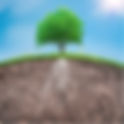SEARCH RESULTS
56 results found for "Guelder rose"
- The Best Mixed Hedging Packs for Every Outdoor Space (2025 Guide)
, and Guelder Rose . Guelder Rose Beautiful white flowers, bright red berries, and stunning autumn colours. Diverse Wildlife Support – Includes Blackthorn, Hazel, Dog Rose, and Guelder Rose to attract birds Guelder Rose Striking white flowers, bright red berries, and stunning autumn colours. Guelder Rose Offers nectar-rich flowers and bright red berries for birds.
- Special Hedging Mixes Inspectors Like: A Farmer’s Guide to Native Species That Tick Every Box
Dog Rose (Rosa canina) Soils: Light, well-drained soils preferred. Rose hips are a classic winter food. Guelder Rose (Viburnum opulus) Soils: Prefers moist, fertile soils; tolerates wetter areas. includes: 60–70% core species (Hawthorn & Blackthorn) 30–40% diversity species (Spindle, Hazel, Dog Rose
- Benefits of Bare Root Trees for Budget-Friendly Gardens
Integrating bare root native trees with companion planting—including Quercus robur (oak), Viburnum opulus (guelder rose), and deep-rooted perennials—optimises resource efficiency while enhancing soil health and biodiversity Bare root roses add both visual appeal and ecological benefits, making them a versatile addition to sustainable alongside compatible companion species such as nut-bearing trees, Cornus (dogwood), and Viburnum opulus (guelder rose).
- BN7 & BN11 Hedgerow Grants: A Farmer’s Guide to Gapping-Up and Planting New Hedges
figures per metre: Plants: £5–£7 Native hedge packs (hawthorn, blackthorn, hazel, field maple, dog rose Common native hedge species include: Hawthorn (quickthorn) Blackthorn Hazel Field maple Dogwood Dog rose Holly Spindle Guelder rose Crab apple No single species can make up more than 70% of the mix. hawthorn 30% blackthorn Wildlife-rich mix 50% hawthorn 20% blackthorn 10% hazel 10% field maple 10% dog rose
- Crafting a Garden Bursting with Blossoms: A Year-Round Guide
Climbing Roses : These timeless favourites create a romantic look, winding through trellises or even
- Exploring Bare Root Hedging
Dog Rose - Dog Rose is a native fast-growing shrubby hedging plant often used in mixed hedges. Elderberry - Suitable for most locations and soil types; Elder is very attractive to wildlife; the flowers Both elderflowers and elder berries are well known and widely used for culinary purposes as they are
- Understanding the Rosaceae Family: Characteristics and Significance
The Rosaceae family ( rose family ) encompasses over 3,000 species in more than 90 genera of flowering Most species have five petals and five sepals , giving a classic “ rose -like” shape. Rosoideae Includes genera such as Rosa (roses), Fragaria (strawberries), and Rubus (raspberries, blackberries Ornamental Plants: Roses ( Rosa ), hawthorn ( Crataegus ), flowering cherries ( Prunus serrulata ), Medicinal Uses: Rose hips ( Rosa canina ) are rich in vitamin C and used in herbal medicine, while
- How to Care for Young Trees in Hot Weather: Summer Tree Watering Tips
It plays several vital roles: Hydration: Just like us, trees need water to stay hydrated and healthy This cools the tree (and even the air around it), but it also means the tree loses water faster during In summer, young trees lose water much faster than they can absorb it from dry soil—especially before A trickle hose or watering can with a rose attachment works well as it reduces runoff—try to avoid spraying This process, called desiccation , means trees lose moisture faster than they can take it up from the
- Diagnosing Tree Health: A Guide for the Experienced Gardener
species like sycamore (Acer pseudoplatanus) or cherry trees (Prunus spp.) , while waterlogging affects elder and rose trees (Rosa spp.) , causing distorted growth and honeydew.
- How to Master Your March Gardening Jobs: The Essential Guide for British Gardens
March is also a key time for pruning deciduous trees, roses, and hydrangeas, while protecting new growth alba ( Red-Barked Dogwood ), Hydrangea paniculata ( Panicle Hydrangea ), and Sambucus nigra ( Black Elder Late-flowering climbers such as Clematis viticella and shrubs like Rosa canina ( Dog Rose ) also benefit
- Are Magnolia Trees Good for Wildlife & Pollinators?
While they're not traditional wildflower-rich habitats, magnolias play a quiet but meaningful role in In this article, we'll look at which creatures benefit from magnolia trees, their role in pollination To enhance this role, pair magnolias with long-flowering companions such as hawthorn or crab apple. not be wildlife powerhouses like native oaks or hawthorn, but they offer a graceful and supportive role While native trees are always the best for specialist species, magnolias still play a meaningful role
- How to Plant a Countryside Stewardship Hedge (BN11 & BN7 Planting Guide)
BN11: Max 70% hawthorn Minimum 4 other species (e.g., blackthorn, hazel, field maple, spindle, dog rose













